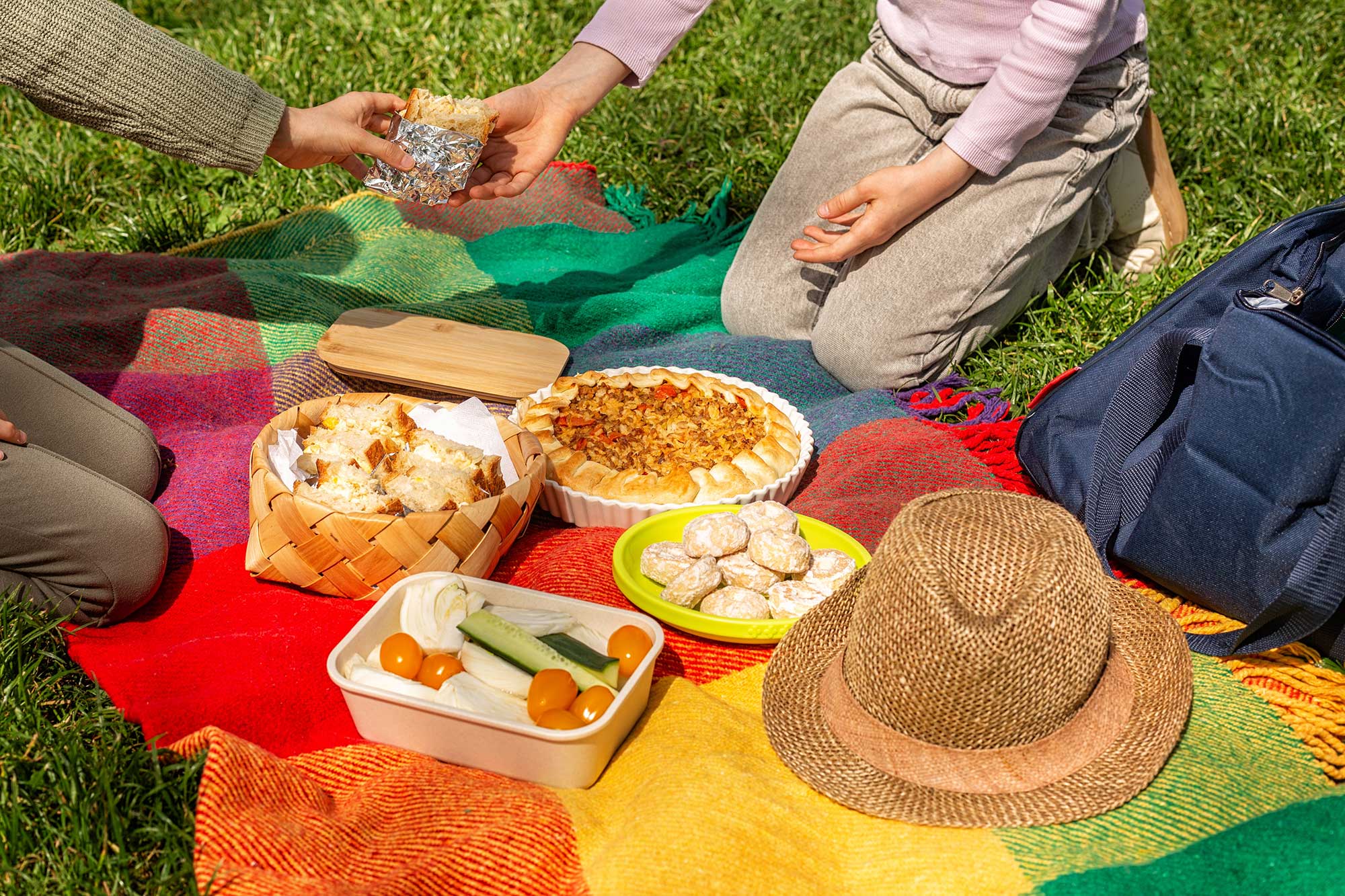Arguably the best thing about Steamy Season is the meals—fresh local produce and chargrilled everything, all begging to be enjoyed outside. That might mean a picnic table covered with bowls of mayo-swathed salads, platters piled high with corn and watermelon, pitchers of lemonade, and a Big Green Egg working overtime. Or it could be a ginormous beach blanket anchored by a cooler crammed with beer and sammies, punctuated by frequent runs for soft serve.
Fast-forward a little and you’re likely to see that table or blanket strewn with the sad dregs of inedible grub that stayed out beyond the safety zone. Outdoor eating, glorious as it can be, is a recipe for waste: heat + perishable foods – refrigeration = landfill. But it doesn’t have to be that way. With help from fellow Substacker, cookbook writer, and food TV personality , we’ve laid out five simple strategies for reducing summer waste.
Eat your bowl
Cup or cone? Cone, duh! Whether you opt for a conical sugar cone, flat-bottom wafer, or hand-rolled waffle, an edible vessel beats the paper cup-plastic spoon combo every time. Not only do you achieve the glorious creamy-meets-crunchy, but everything ends up in your belly instead of the bin. You can also apply this line of thinking to minimize the need for potentially disposable tableware elsewhere by opting for vittles that are their own vessels, like franks and sammies.
Respect the two-hour rule
Touted by the USDA, FDA, and CDC, the two-hour rule is simple: Never leave perishable food out of refrigeration for more than 120 minutes. This avoids foodborne illnesses from bacteria like Salmonella and E. coli, which thrive at temperatures between 40 and 140 degrees Fahrenheit. This limit includes whatever time the grub travels before it reaches that beach or picnic table. And once the temp tops 90 degrees Fahrenheit—as it now does on the regular—the stopwatch dips to one hour. Keeping an eye on the time ensures that you won’t have to toss the food, or your cookies.
Divvy up the dishes
Cooking up a delicious dish that’s destined for the outdoors? “Divvy it up and stagger putting it out,” Krieger advises. That means instead of serving it in one big bowl, pan, or plate, use two vessels and keep one cold (or hot) while everyone digs into the other. When the first helping gets low—or hits the two-hour mark—swap it for the second. That way, whatever doesn’t get eaten may live to see another meal.
Deploy dual coolers
Packing a picnic? Rather than toting one giant cooler, stash the bevvies in one and grub in another. The one holding the drinks will inevitably get opened way more frequently, and every time someone grabs a frosty brew, the mercury in that cooler goes up. Warm beer may be a bummer, but it ain’t gonna hurt you. Warm sammies and slaw, on the other hand, are breeding grounds for bellyaches. “And make sure everything’s very cold when it goes into the coolers,” Krieger adds.
Chill on the menu
Americans toss nearly 32% of the food we buy, and some of that comes down to simple fear. “People are afraid of running out of food, so they wind up with too much,” Krieger says. That goes double when hosting. “I don’t think people step back and think, ‘Whoa, maybe I don’t need four entrees.’” That’s why—especially at sultry summer gatherings—it’s good to stay clear-eyed and reject the impulse to buy that extra package of plant-based dogs. If you must take the more-is-more approach, keep them on ice till you need to break them out.

